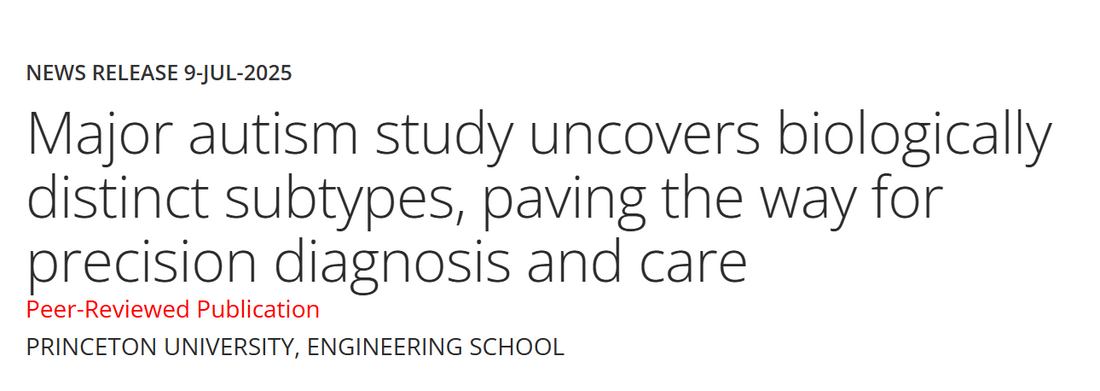For decades, autism has been treated as a single, broad diagnosis—an umbrella term covering a wide spectrum of traits, symptoms, and experiences. But a new study published this month in Nature Genetics is challenging that view in a powerful way. By analyzing both behavioral and genetic data from thousands of individuals, researchers have identified four distinct genetic subtypes of autism, each with its own developmental and biological signature.
This breakthrough could mark a turning point in how we understand, diagnose, and support people on the autism spectrum.

A Phenotype-First Approach to Understanding Autism
The study, led by researchers working with the SPARK autism cohort (a large U.S.-based research initiative), analyzed data from 5,392 children diagnosed with autism. But instead of starting with genes or diagnostic labels, the scientists used a phenotype-first model—a way of clustering individuals based on their full range of traits and behaviors.
Each child in the study had 239 different characteristics recorded, including cognitive development, social communication abilities, co-occurring conditions like anxiety or ADHD, and developmental delays. This information was then fed into an advanced statistical model, which grouped individuals into four distinct subtypes based on shared patterns.
Once these behavioral subtypes were established, the researchers looked at genetic data—both common and rare variants, as well as inherited and de novo (spontaneous) mutations—to see whether these clusters had biological roots.
Four Subtypes, Four Genetic Signatures
Here’s where things got really interesting: each behavioral subtype had a distinct genetic fingerprint.
For example, one group—those with a mix of autism traits and developmental delay—showed strong associations with rare, high-impact genetic mutations, especially in genes active during early brain development. Another group, which the researchers labeled as "Broadly Affected," had the highest rate of damaging mutations in highly constrained genes (those not usually tolerant to change).
Other subtypes had different patterns: some linked more to common polygenic risk factors (small genetic influences spread across the genome), while others showed inherited mutations that aligned with specific developmental outcomes, such as speech delays or attention issues.
This layered view—combining behavior with biology—offers a clearer picture of autism not as a single condition, but as a set of related, genetically distinct conditions that share some outward traits.

What This Means for People with Autism and Their Families
The most immediate implication of this research is that it could lead to more personalized and precise autism care.
For families, this means that instead of receiving a generic autism diagnosis, a child might one day be told not just that they’re autistic, but which subtype they fall into, and what that means for their development, learning style, and healthcare needs.
It could also help answer tough questions that families often face:
-
Will my child speak?
-
Will they need lifelong support?
-
What therapies are likely to help them the most?
By linking specific genetic patterns to real-world traits and outcomes, this research opens the door to targeted interventions. Some subtypes might benefit more from speech therapy, while others might need more support for anxiety or motor development. Genetic insights could also inform educational planning, behavioral therapy, and even medication choices down the line.

Looking Ahead: The Future of Autism Research and Care
This study is a strong step toward a future where autism care is not just reactive, but proactive and personalized. It also lays a foundation for studying autism more like how we now approach cancer or heart disease—acknowledging its subtypes and designing treatments accordingly.
However, the researchers caution that we’re still early in this journey. Many of the genetic variants linked to these subtypes are still being explored, and more work is needed to include underrepresented populations, such as non-verbal individuals and those from diverse ethnic backgrounds.
But the bottom line is hopeful: by embracing the complexity of autism and digging deeper into both traits and genes, we can move beyond one-size-fits-all approaches. This means better answers for families, better tools for clinicians, and ultimately, better lives for people on the spectrum.
Sources:
-
Nature Genetics (2025). “Decomposition of phenotypic heterogeneity in autism reveals underlying genetic programs”
-
SPARK Research Match
-
EurekAlert! Science News

